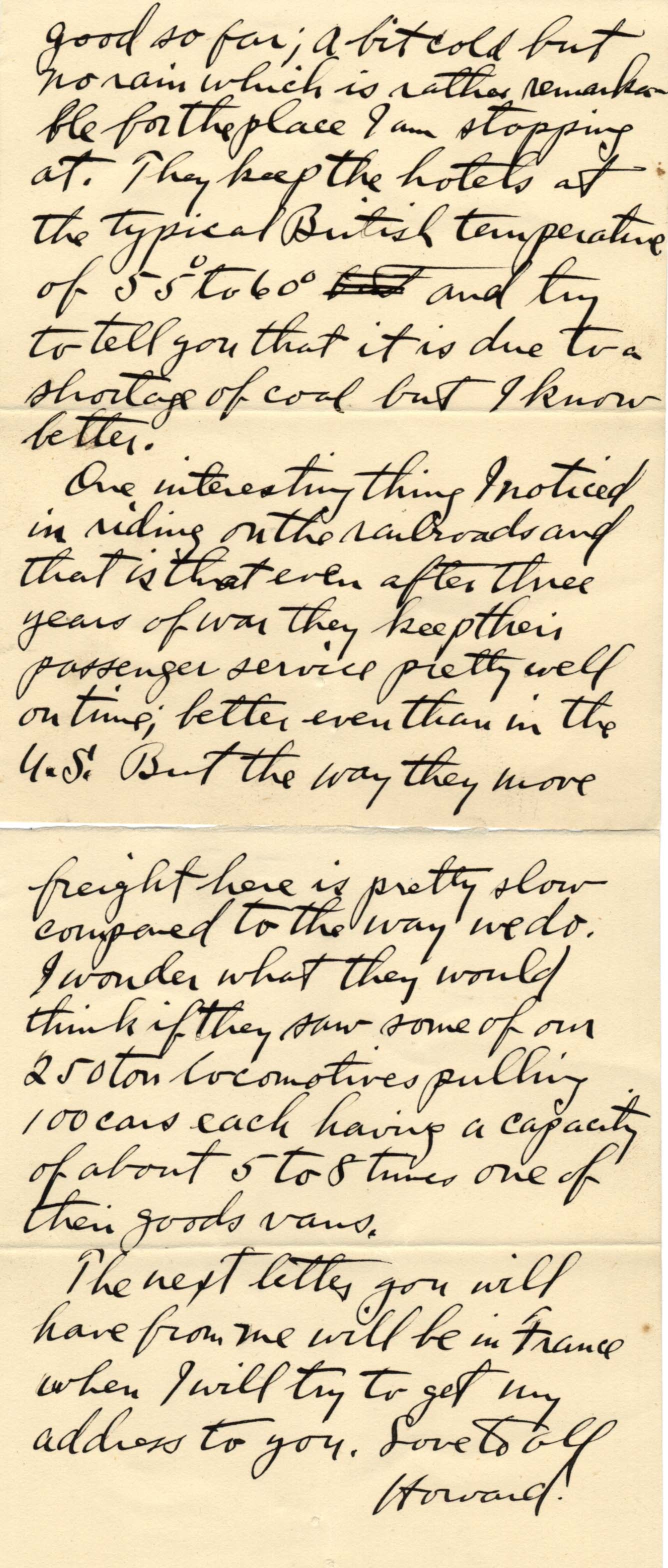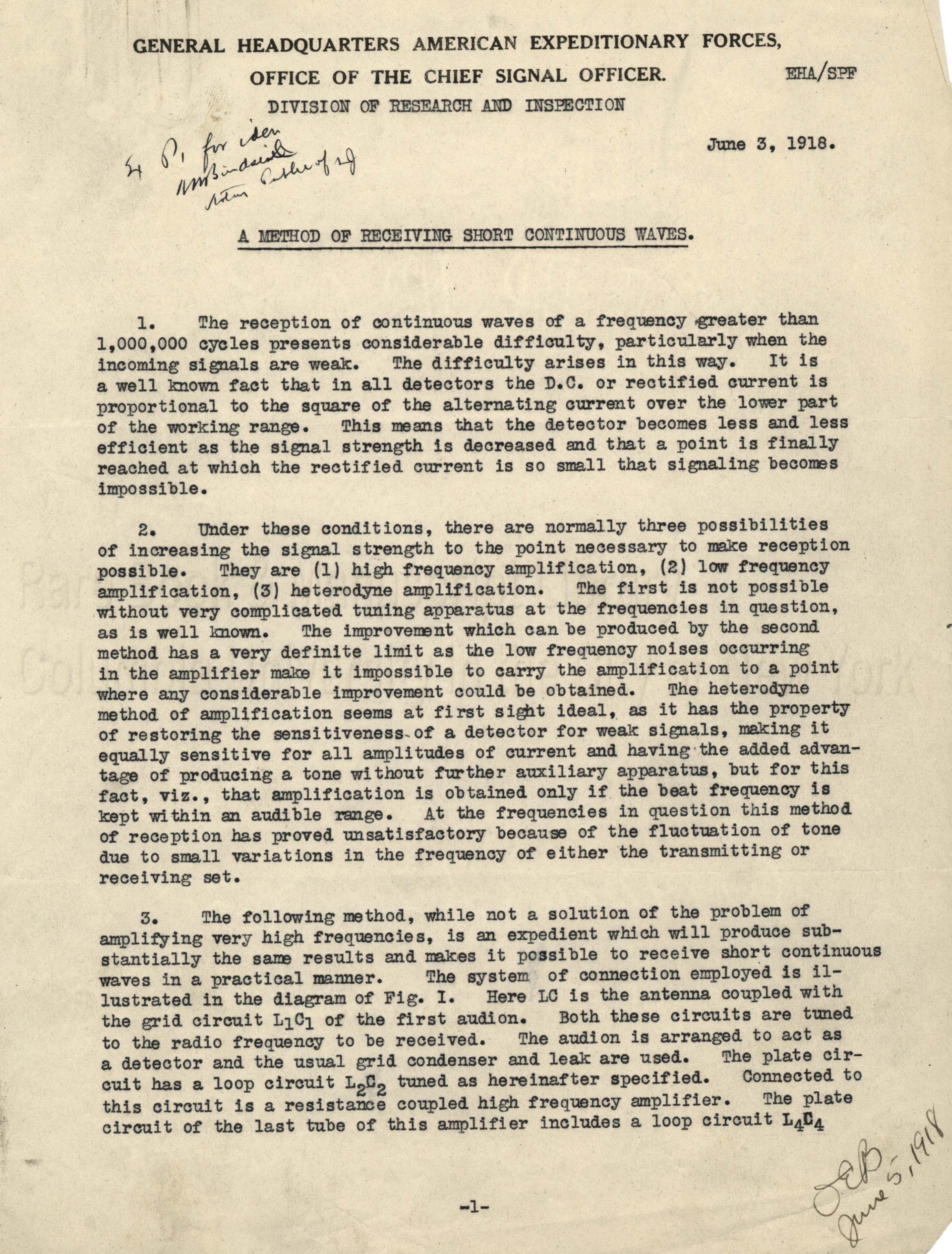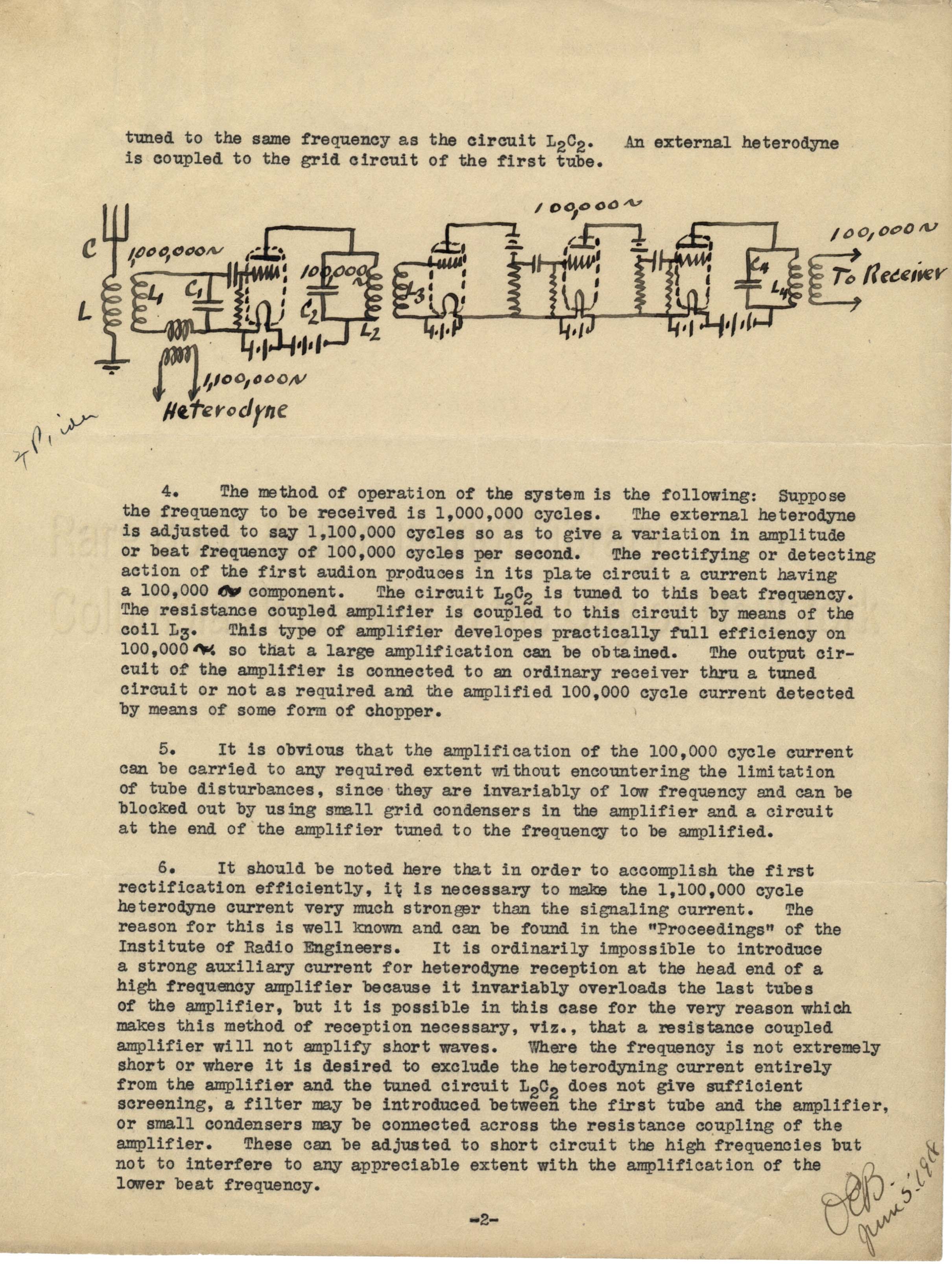When the United States entered World War I, Armstrong enlisted in the Signal Corps. In 1917 he was posted to France, placed in charge of the Radio Group of the Research Section of the Division of Research and Inspection. This Division had been created in order to examine any existing equipment manufactured by the Europeans for the American Expeditionary Forces.
 |
The Major set off to France but en route he was delayed in England due to heavy fog. While there, he ventured to London, stopping by the Marconi offices. The letter seen here (below), dated 1917 October 28, from Armstrong to his mother, details his visit and recounts his introduction with Henry Joseph Round.
 |
 |
Round was an engineer with Marconi who, at the time, was in charge of the Admiralty’s wireless direction-finding stations. It was here that Armstrong was introduced to Round’s short-wave equipment. Round had created these amplifiers by designing his own vacuum tube (V24). These tubes were not, and would never be, available to the French and the Americans, as these tubes were not appropriate for the task. Armstrong’s attention was captured as this was a problem that required further research.
Armstrong had studied heterodyne circuitry for quite a while and understood it well. This meeting with Round pushed him further and he continued to examine the problem of receiving weak high frequency signals. As the Major recounts some years later upon receiving the Edison Medal in 1943:
"The third link came months later as I happened to be watching a night bombing raid and wondered at the ineffectiveness of the antiaircraft fire. I may say that night bombing was not very dangerous in those days, either for the man on the ground or the man in the airplane. Thinking of some way of improving the methods of locating the position of airplanes, I conceived the idea that perhaps very short waves sent out from them by the motor ignition systems might be used. The unique nature of the problem, involving the amplification of waves shorter than any ever contemplated and quite insoluble by any conventional means of reception, demanded a radical solution. All three links of the chain suddenly joined up and the superheterodyne method of amplification was practically forced into existence. Not one link in the chain could have been dispensed with. This, I think is the only completely synthetic invention I have ever made." 1
The bombing raid and third link, to which Armstrong refers above, occurred in Paris, March 1918. He had thus sorted out how to use the heterodyne principle to bring short-wave frequencies down to the range of his long-wave amplifier. He worked out the necessary experiments needed to prove his forthcoming invention, writing down the proposed method in June 1918 with Major Buckley signing off as witness (proposal seen here in 3 pages).
 |
 |
 |
Following Armstrong’s proposed methodology to Major Buckley, experiments would need to be conducted. Armstrong needed assistance to stage these experiments and create the necessary apparatus. With war work taking precedence and his fellow officers tied up in other pressing projects, his work was delayed. The first model was not ready until November. Armstrong first applied for patent in France in December 1918 and for United States patent in February 1919.
When Armstrong returned from the war he presented his paper, "A New System of Short Wave Amplification," to the Institute of Radio Engineers in December of 1919, delineating his new receiver.
In 1920, Westinghouse purchased Armstrong’s regeneration and superheterodyne patents. Also, around this time, AT & T purchased Lucien Levy’s patent for essentially, the same invention. Originally Levy’s patent covered a different purpose than did Armstrong’s resulting in the US Patent Office not catching the conflict. Someone eventually noticed this apparent conflict and priority needed to be resolved.
The Court of Appeals in the District of Columbia ruled in Levy’s favor and his patent was issued on November 5, 1929, with a priority date of August 4, 1917 (he had filed 6 months prior to Armstrong). While Levy, by law, is considered the inventor of the superheterodyne method, Armstrong is recognized as bringing about its commercialization through the single tuning knob superhet receiver.
1-Armstrong, Edwin H. "Vagaries and Elusiveness of Invention," Electrical Engineering 62 (April 1943).
Additional Information regarding superheterodyne patent:
Schottky, Walter "On the Origin of the Super-Heterodyne Method," Proceedings if the IRE, Vol. 14, No. 5, 695-698 (October 1926)
Armstrong, Edwin H. "A New System of Short Wave Amplification," Proceedings of the IRE, Vol. 9, No. 1, 3-27 (February 1921)
Douglas, Alan S. "Who Invented the Superheterodyne?," Proceedings of the Radio Club of America, Inc., Vol. 64, No. 3, 123-142 (November 1990)